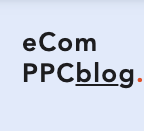Google Shopping Tips for B2B Businesses
The Google Shopping tab has become the ‘go to’ place for users looking to buy and research products. In April 2020 alone, Google Shopping orders grew by 113% YoY.
For more blogs, visit ecomppcblog.com
The shopping tab is a key area that Google is planning to grow over the next few years, aiming to make it easier for consumers to compare products and checkout, without ever needing to leave the Google browser.
With more people shopping online, Google Shopping is becoming more important for retailers, not just for B2C retailers, but B2B also.
As more businesses turn to Google to buy supplies, business-to-business Google Shopping strategy will become more and more important. In this article, we take a look at how you can get Google Shopping working for your B2B business.
Firstly, What is Google Shopping?
Google Shopping ads are paid listings that appear predominantly on the ‘Shopping’ tab of the Google search engine results page (SERP), although they are also displayed in YouTube and some Gmail placements. The ads displayed contain a product image, title, price and description. Similar to Amazon, shoppers can browse and compare products from a wide range of brands and retailers.
In order to serve ads, advertisers upload a feed containing their product information into the Google Merchant Center. Ads serve based on a products relevance (e.g. description and title) to the users search term, and the bid set in Google Ads.
Tips For B2B Businesses Running Google Shopping
Product Feed Setup
A ‘Primary Feed’ is essentially a list of your products in an excel format or Google Sheet that is uploaded into the Google Merchant Center. A schedule needs to be created to refresh the data each day each day (e.g. price & stock levels) keeping it accurate. Once approved, you will be enabled to run Google Shopping ads.
Google Shopping ads are liable to serve for both businesses and individuals, as a result you need to make sure you submit the highest price an individual could pay for your product. This means including taxes, such as VAT, if applicable — even if not relevant to your B2B customers. This should be reflected in the ‘[price]’ attribute in the feed.
If you sell in bulk and have a minimum order numbers — again this should be reflected in your pricing. In some regions you may submit a ‘[unit_price_measurement]’ to your feed. You must submit the pricing if sold as a pre-packaged item.
Similar to pricing information, include shipping information in the feed applicable for both B2B and B2C audiences. You need to provide the maximum shipping cost someone could pay — overestimate if needed.
Finally, it’s important that these values in the feed are reflected in the landing page, or products may be disapproved from serving in Google Shopping, but more on that shortly.
You can find more information here.
Campaign Targeting & Keywords
Once your feed is setup, you’re ready to start advertising on Google Shopping.
With Google, there are tons are targeting options and ‘levers’ you can pull to target B2B audiences. Some ideas to consider:
Google Audiences
Based on user’s browsing behaviour (e.g. keywords they search or pages they visit), Google builds audiences that you can target in Google Ads. These audiences can be used to give your ads the best chance of serving for B2B customers.
In-Market audiences group people who may be actively researching a purchase. Some useful In-Market audiences for B2B campaigns include: ‘Business Services’, ‘Business & Industrial Professionals’, or ‘Business Technology’.
Other audience options include: Detailed Demographic data (e.g. ‘Manufacturing Industry’ or ‘Construction Industry’) and Affinity Audiences (e.g. ‘Business Professionals’) based on a user’s interests.
First Party Data
With growing privacy likely to restrict cookie data in the future, owned data is becoming more important in the world of Google Ads. This can allow you to target audiences in your CRM data when they are searching on Google, but also users whose browsing behaviour is similar to that of your audiences.
This can work great for re-engaging lapsed customers, converting warmer audiences and prospecting for new customers with behaviour similar to that of your existing customers.
NOTE: — Before uploading or targeting CRM data, ensure you have the correct permissions to use the data within PPC advertising.
Relevant Keywords
Query funnelling strategies can be applied to your Google Shopping campaigns to increase the chances of serving for certain keywords. Based on this you can identify relevant keywords B2B audiences may search (e.g. ‘bulk’, ‘wholesale’, ‘trade price’) and aim to increase Google Shopping bids to serve for these terms.
Locations
Do you target customers in certain regions? You can use location target to select certain area of the country — Google Ads can even go as granular as postcode.
Other Targeting Options
On top of this there are a range of further targeting options available, including: time-of-day, device, and language.
Landing Pages
With the right targeting in Google Ads, you can drive high quality traffic to your website. So now you’ve got them to site, the final piece of the puzzle is a quality landing page.
Ensure your landing page is user friendly for both B2C and B2B audiences. Some things to consider:
- Display your policies (e.g. refund and return) on site
- Ensure your pricing is clear. Submit a total price including taxes — make sure this matches the price in the feed, otherwise products may be disapproved.
Conclusion
Google Shopping is a huge (and growing) marketing channel. Though viewed as more of a B2C platform, as consumer behaviour changes, so will B2B audiences. By testing some of the targeting above, your B2B business could see strong performance from Google Shopping, and get ahead of consumers.
